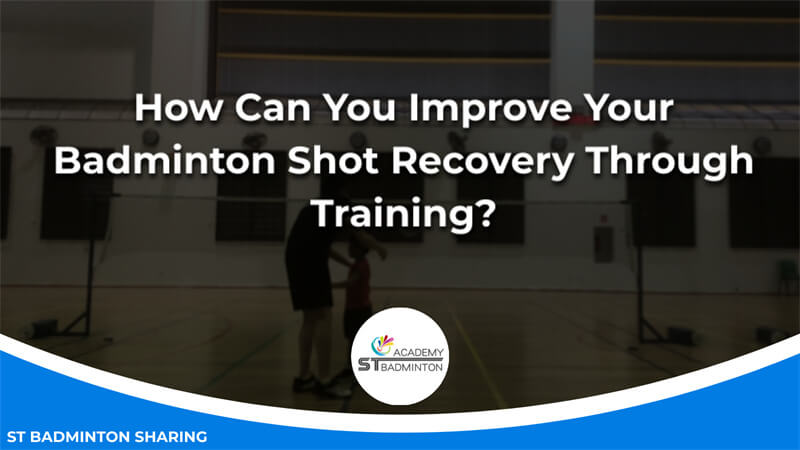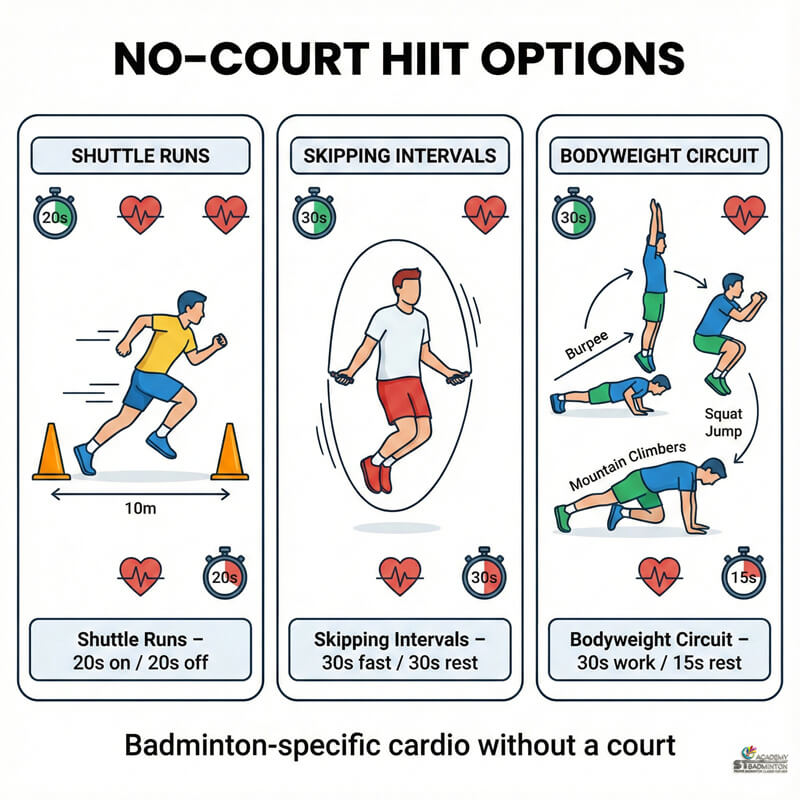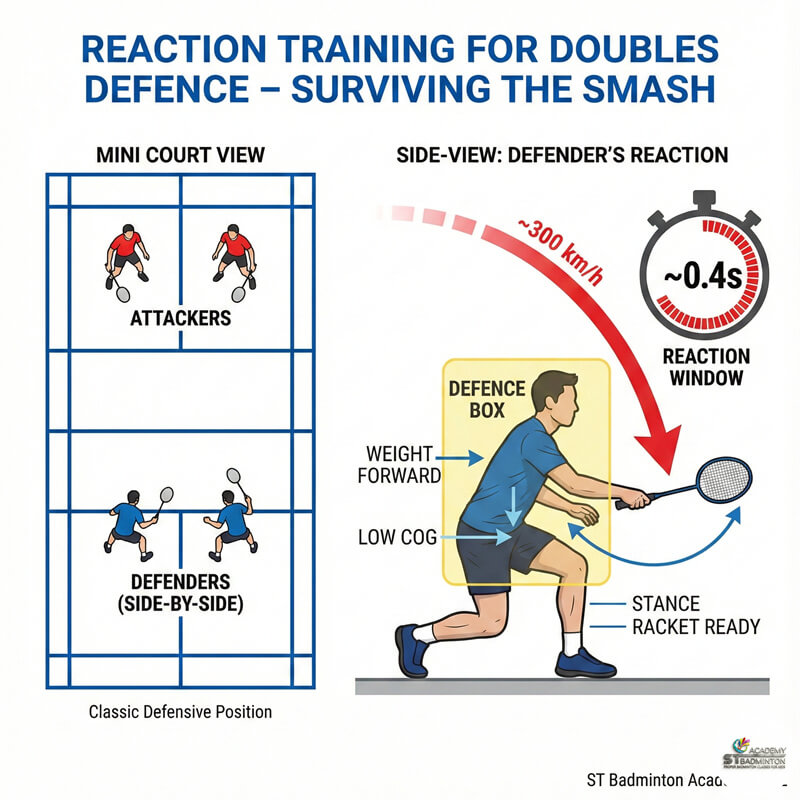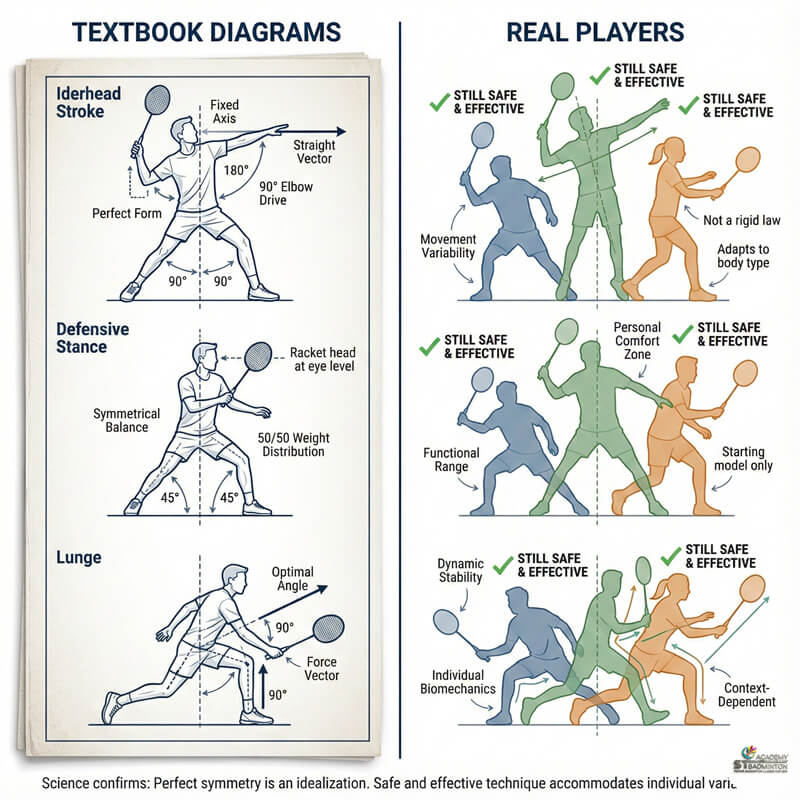Welcome to ST Badminton Academy’s badminton training in Malaysia! As a badminton coach, I know how important shot recovery is for improving your game. No matter how good your shots are, if you can’t quickly recover and get back into position, it won’t help you much in the long run.
That’s why I’m here to talk about some of the best training methods you can use to improve your badminton shot recovery!
Training your body to recover quickly after each shot will not only make you a better player but also give you an edge against opponents. In this article, we’ll cover exercises that focus on strengthening key muscle groups used during badminton-specific activities such as serving, receiving, and lunging. We’ll also look at drills designed to build up agility and speed so that you can return to center court faster than ever before!
Strength Training For Badminton Shot Recovery
When it comes to improving your badminton shot recovery, most people think of physical strength training. But what they don’t realize is that mental focus and strategic planning can be just as important for a successful recovery.
Imagine the court like an obstacle course with obstacles in between you and your goal: the birdie. You have to stay focused on reaching that end point no matter how many shots are thrown at you from all directions! To do this, you need to plan out each step so you know exactly where to move next. Visualizing the steps before executing them will help keep you agile and responsive during gameplay.
Having strong muscles won’t hurt either, but if you want to improve your reaction time and agility then plyometric exercises should be added into your routine too. Plyometrics involves explosive movements such as jumping or hopping which helps build power in legs, arms and core – perfect for fast-paced sports like badminton!
Plyometric Exercises For Improved Speed And Agility
Now that we’ve discussed strength training for improving shot recovery, let’s move on to plyometric exercises to increase speed and agility. Plyometric drills are an excellent way of developing power in the legs which is essential for badminton because so much movement is required during a match.
These drills can involve jump squats, box jumps, single-leg hops, lateral bounds, and many more. Doing these dynamic movements will help you become more explosive on the court and reduce fatigue when performing quick changes in direction or sudden stops.
It’s also important to incorporate some dynamic stretching into your routine as well. This form of stretching helps loosen up tight muscles while actively engaging them at the same time by going through ranges of motion with controlled momentum. Dynamic stretches such as walking lunges, arm circles, and leg swings should be done before any other exercise since they warm up the body efficiently and prepare it for a more intense activity like plyometrics.
With both types of training combined together regularly, you’ll be able to build up the physical endurance needed for long rallies without compromising on speed or agility – two key components for successful badminton playing! From here, strengthening core muscles becomes crucial for stability when hitting shots from all angles powerfully yet accurately.
Core Strength For Stability
I’m going to talk about core strength for stability when it comes to improving your shot recovery. Core strength is essential in badminton because having a strong core will help you have improved posture and coordinated movements while playing.
To begin with, let’s focus on developing a stronger trunk by doing exercises such as planks, sit-ups, and leg lifts. Doing these types of exercises regularly can strengthen the muscles around your abdomen and back which are important for maintaining balance during shots. This can also help improve your overall body coordination so that you can hit the birdie more accurately and with less effort.
In addition to strengthening your core, I would recommend focusing on dynamic stretching before and after each session. Dynamic stretches involve active movements like lunges and arm circles that will increase flexibility and range of motion in key areas like hips, shoulders, and legs. These stretches not only warm up the body but also help increase agility which is important for quick reactions when recovering from shots.
By combining core workouts with dynamic stretching, you’ll be able to build better control over your body while still being prepared and physically ready to get into position quickly when needed. Improving your posture and coordinated movements through this training should lead to better shot recovery performance on the court. From here we’ll move on to discussing ways to develop balance training for even better movement abilities
Balance Training For Better Movement
Now that you have improved your core stability, it’s time to start training for better movement. Balance and coordination are key elements of badminton success – so let’s take a look at how we can enhance them through drills and exercises.
First off, I recommend incorporating footwork drills into your workout routine. Moving around the court quickly is essential in badminton; thus, focusing on maintaining balance while changing direction rapidly will improve your shot recovery abilities immensely. Footwork drills include things like:
| Lateral Movements | Forward/Backward Movements |
|---|---|
| Side Shuffles | Jogging with High Knees |
| Crossover Hops | Lunges |
| Skater Jumps | Backward Running |
Once you feel comfortable with these basic exercises, try adding some more complex coordination drills such as jumping rope or ladder drills to further fine-tune your agility and speed. This will make it easier for you to reach shots quicker by increasing your awareness of both where the shuttlecock is heading and where you should be moving next.
It’s now time to move on to building muscular endurance through isometric exercises. Isometrics utilize static bodyweight positions to overload muscles without necessarily having to lift weights…
Isometric Exercises For Muscular Endurance
As a badminton coach, I strongly recommend that players include isometric exercises in their training routine to improve shot recovery. Isometrics are static bodyweight and resistance banding exercises which help build muscular endurance and promote better blood circulation for quicker muscle recovery time between shots.
Below is an example of a few key isometric exercises you can do as part of your badminton workout:
| Exercise | Repetitions | Sets |
|---|---|---|
| Squats | 10-15 | 2-3 |
| Wall Push Ups | 15-20 seconds | 3-4 |
| Plank | 20-30 seconds | 3-4 |
By performing these simple exercises regularly, you will be able to increase the duration of your plays on the court with improved energy regeneration levels. Doing this also helps reduce fatigue during long rallies, allowing you to stay focused throughout each match. With greater muscular strength and stamina, recovering from challenging shots becomes easier!
Flexibility Exercises For Full Range Of Motion
Now that we have discussed isometric exercises for muscular endurance, let’s move on to flexibility exercises for a full range of motion. Did you know that having a strong base level of mobility and flexibility can actually help improve your badminton shot recovery? It’s true! A great way to achieve this is by incorporating dynamic stretching into your routine. Other than choosing a good racket and also remember to choose the best racket restring in Malaysia.
Dynamic stretching helps condition the body with more sport-specific movements – like those used in badminton – while also improving coordination and balance. This type of stretching should replace static stretches before any kind of training session or match play as it helps prepare the muscles for activity rather than relaxing them as static stretching does.
As a coach or trainer, I recommend including dynamic stretching drills such as leg swings, arm circles, reverse lunges, inchworms, and side shuffles. Remember to focus on proper form throughout each movement – a good technique not only increases performance but prevents injury too!
At its core, successful badminton shot recovery requires mental focus just as much as physical skill. Keeping focused when playing an opponent will make all the difference between winning and losing. To stay mentally sharp during matches, practice visualization techniques prior to game time so that you are prepared for anything thrown at you (metaphorically speaking).
Visualizing what shots will be played where can give players an edge over their opponents since they already know how they would respond in various scenarios – regardless if they ultimately choose the correct shot or not. With regular practice, players can develop quicker decision-making skills which lead to better overall play and improved badminton shot recovery.
Agility Drills For Quick Reactions
As a badminton coach or trainer, it’s important to help athletes improve their shot recovery time. To do that, I typically focus on agility drills and coordination exercises.
For instance, lateral shuffles, sprints, and jogging are great for improving movement around the court while also increasing foot speed. Additionally, movements like skipping rope and hopping can be used to develop better coordination between the feet and upper body which is essential in becoming faster with your shot recoveries.
It’s not just physical training though; mental focus plays an integral role too. Before each drill session, I encourage my athletes to visualize how they want their shots to look before actually executing them on the court. This helps instill confidence as well as muscle memory when trying to return shots quickly during real match situations. Furthermore, taking deep breaths before returning shots helps relax muscles and activate quick reactions as needed for successful returns down the line.
To really maximize performance levels out there on the court, interval training is key in building up endurance over longer matches so you can keep returning those fast-paced shots without feeling fatigued toward the end of the game.
With intervals consisting of both short bursts of energy combined with rest periods, this type of training allows players to work at optimal intensity throughout the entire match instead of having dips in energy levels due to exhaustion or lack of concentration in later rounds. Moving forward into our next section we’ll take a closer look at interval training for optimal performance.
Interval Training For Optimal Performance
Being a successful badminton player requires not only agility, accuracy, and finesse, but also the ability to recover from mistakes quickly. As your coach, I’m here to tell you that it’s possible to improve your shot recovery through training.
Interval training is key when it comes to improving your badminton shot recovery. Speed drills like shuttle runs are great for increasing both your speed and endurance while plyometric drills such as knee jumps will help build explosive power in order to get back into position faster. Additionally, incorporating balance exercises into your workout routine helps sharpen coordination which is essential for fast-paced sports like badminton.
The next time you’re on the court, remember that with proper interval training, you can bounce back from any mistake almost immediately! You’ll be able to move around the court more efficiently and increase your chances of winning every match. So don’t let those little missteps slow you down – train smart and stay ahead of the game!
Frequently Asked Questions

What Type Of Footwear Is Best For Badminton Shot Recovery Training?
When it comes to badminton shot recovery training, the best type of footwear for optimal performance is one that provides both strength-building and muscle toning. I recommend a flexible shoe with adequate cushioning around the heel and forefoot area for better shock absorption when jumping or quickly changing directions. Make sure that you are comfortable in your shoes and that they fit properly as this will help prevent any injuries during training.
How Often Should I Do The Different Exercises For Badminton Shot Recovery?
When it comes to badminton shot recovery, training is key. As a coach or trainer, I recommend doing rehabilitation techniques and plyometric exercises at least twice a week for optimal results. Make sure to listen to your body’s signals too – if you feel like the exercises are becoming too difficult then scale back a bit. Focus on getting better each day so that when game time arrives, you’ll be ready!
What Type Of Diet Is Best For Badminton Shot Recovery?
When it comes to badminton shot recovery, diet can make all the difference. Take for example my client Bob; he had been struggling with fatigue after playing a few sets of singles and was desperate for answers. After looking into his nutrition habits and hydration levels we discovered that by simply adding in more protein-rich foods like fish or eggs before matches, taking regular rest periods throughout the day, and ensuring adequate water intake,
Bob’s energy levels increased drastically. This allowed him to perform better during training sessions and recover quicker afterward – something essential if you want to get back on the court at your best!
Are There Any Stretching Techniques To Improve Badminton Shot Recovery?
If you’re looking to improve your badminton shot recovery, then incorporating some stretching techniques is a great place to start. Plyometrics training and technique drills are essential for helping athletes build strength and mobility in their muscles, allowing them to recover more quickly between shots.
I’d suggest doing dynamic stretches before each match or practice session – these should focus on the main muscle groups used while playing badminton such as the quadriceps, hamstrings, calves, and glutes. You can also do static stretches after each game, which will help with circulation and reduce soreness. Incorporating both types of exercises into your routine will help keep you limber so that you can play better and recover faster!
Are There Any Other Types Of Exercise That Can Help Improve Badminton Shot Recovery?
Plyometrics, core strength, and other exercises can power up your badminton shot recovery. As a badminton trainer, I recommend plyometric drills like jump squats, high knees, and burpee box jumps to build explosive power in the lower body for quick rebounds.
Working on core strength with planks, bridges, side plank rotations, and mountain climbers will also improve your stability and ability to move quickly between shots. These exercises are essential for any dedicated badminton player who wants to maximize their performance potential!
Learn Badminton Shot Recovery with Professional Badminton Coach
We have just discussed the best ways to improve your badminton shot recovery. With the right type of footwear, regular exercises and stretches, a healthy diet, and some extra training you can absolutely revolutionize your game in no time at all!
Your opponents won’t even know what hit them when they see how effortlessly you move around the court – recovering from shots that would normally leave you tired and breathless. You’ll be unstoppable with these simple tips for improving your badminton shot recovery. So don’t wait any longer- start putting these strategies into action today and show everyone what you’re made of!





